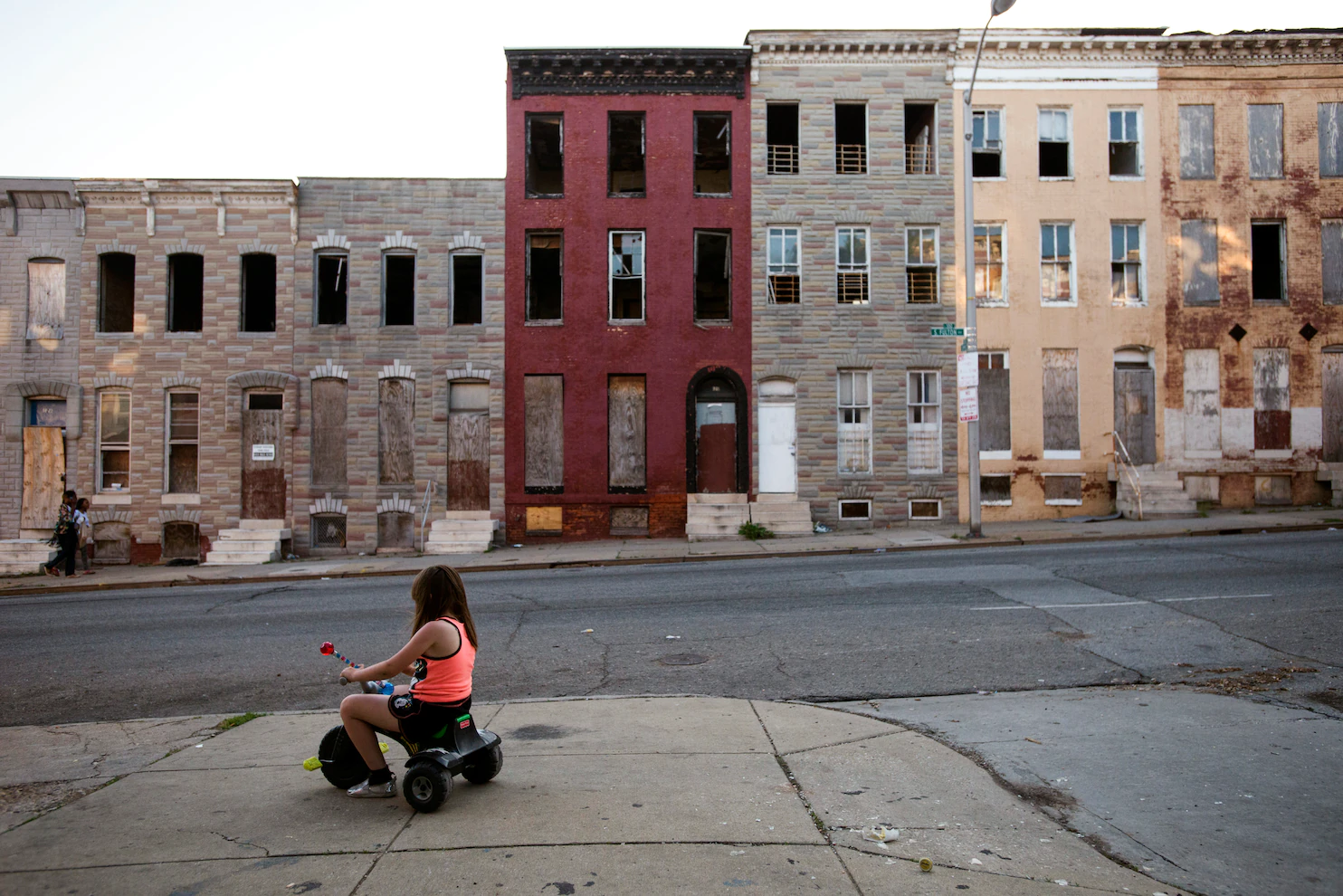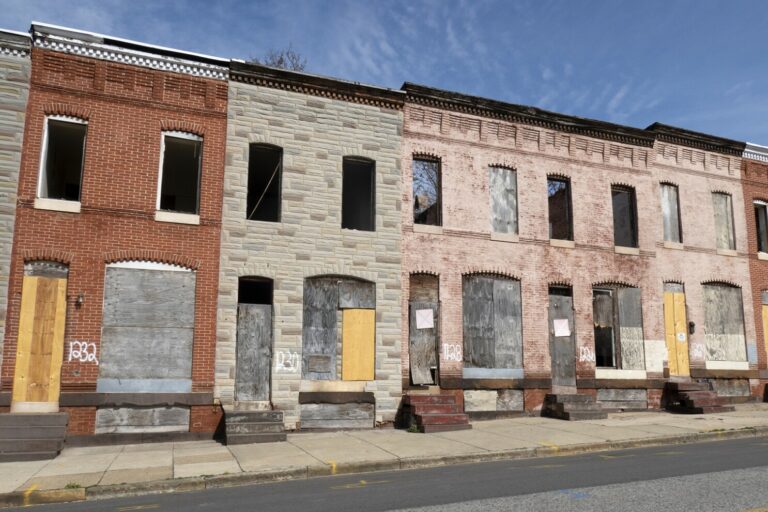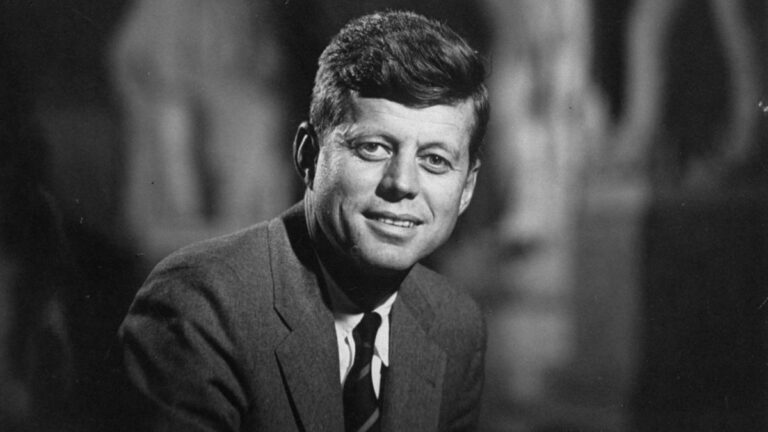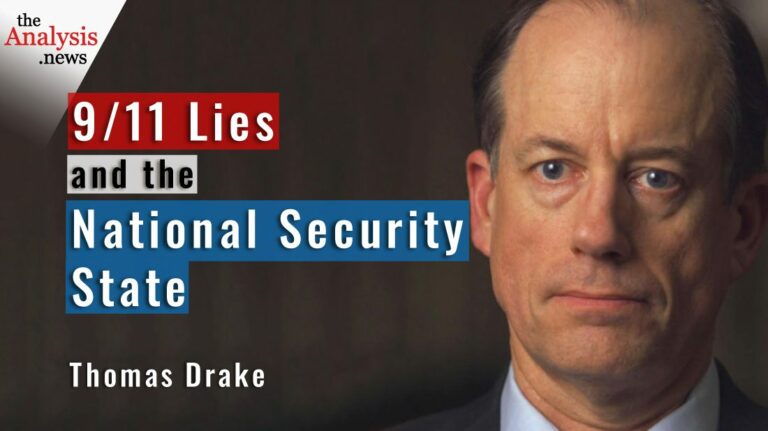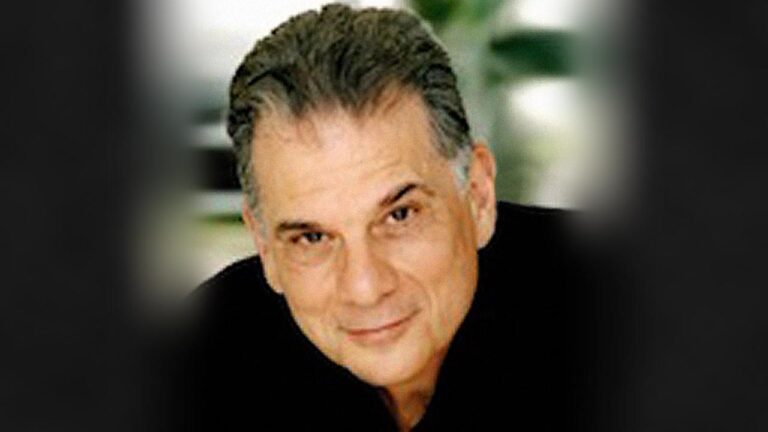Gentrification of Baltimore’s Middle East – Marisela Gomez on Reality Asserts Itself (pt 3/4)
This is an episode of Reality Asserts Itself, produced on January 9, 2014. Hopkins-trained doctor Marisela Gomez tells Paul Jay that Johns Hopkins expansion plans are changing the class and racial character of the surrounding community.
PAUL JAY, SENIOR EDITOR, TRNN: Welcome back to Reality Asserts Itself on The Real News. I’m Paul Jay in Baltimore.
And we’re continuing our discussion about Middle East, Baltimore. It’s an area of Baltimore just to the north of Johns Hopkins Hospital, where thousands of people used to live. Many have been forcibly–used eminent domain, the city law, to force people out of their houses so Hopkins can expand. And it’s one sample or example of the problem of boarded-up and vacant housing in Baltimore.
Now joining us to continue our discussion is Marisela Gomez. She’s a community activist and author, public health professional. She got most of her education at Johns Hopkins, where she earned a PhD, and MD, and an MPH. And she’s the author of the book Race, Class, Power, and Organizing in East Baltimore: Rebuilding Abandoned Communities in America.
Thanks for joining us again.
DR. MARISELA GOMEZ, COMMUNITY ACTIVIST AND ORGANIZER: Thank you for having me.
JAY: So a lot of this plan–the Hopkins expansion and to turf people out of this area–was developed when Martin O’Malley, who’s now the governor of Maryland and hopes to be president–he’s apparently getting a serious bid going–a lot was done while he was the mayor of Baltimore. So how has he done? How is his planning working out? And what accountability does he have for all of this?
GOMEZ: Well, I think you’re absolutely correct. It is his plan. This came during his administration. His language has always been that there was needing to be a bold new plan in Middle East to address this crime and the safety issues–which, by the way, was crime and safety issues for not just Johns Hopkins but for the community. It’s always been an issue for the community.
JAY: Yeah, the people who suffer most from the crime are the people living in the communities.
GOMEZ: Absolutely. But it was after a couple of incidents at the Hopkins campus that this plan for we really have to do something now, this is infringing on our safety, when you might say that this big, bold plan was announced by the mayor.
JAY: Right. So if the crime’s poor-on-poor, we can manage it. But when it breaks out of those boundaries, then we have to do something about it.
GOMEZ: That’s right. When it gets into that walled-off space that we think is for the privileged and protects the privileged, then we have to keep expanding our walls, I think, which is something that Hopkins has done over the years. It’s expanded its walls to continue to keep itself feeling safe, its community to feel safe.
So when Martin O’Malley, then mayor, announced this plan, he said this was the city’s plan. He said, and he was quoted as saying, yes, it involves Hopkins expansion, but the city’s taking the lead on this. It was such an example of public-private partnership, one–the biggest one you’ve probably–we’ve ever seen in Baltimore, where the city government would take the lead on facilitating a private expansion, not only in making sure to acquire land through government law, but also to provide subsidy for a $1.8 billion project–now over $500 million spent to date, 12 years in.
JAY: This is where they created East Baltimore Development Incorporated, with about, what, $1.8 billion to–public money, some foundation money, some Hopkins money.
GOMEZ: Exactly, $1.8 billion to facilitate this expansion into this 88 acre area. Of the $500 million spent to date, almost half is public subsidy in some form of grant, tax subsidy, tax increment financing, to help the developer expand. So it’s been–I think we have to really keep sight of the fact that this is a public-private partnership that is fully invested in helping this private entity gain more power and more access to resources.
And this EBDI, East Baltimore Development Incorporated, which is the proxy for this development, it’s a public-private organization which doesn’t allow us, as the public, to access its records because it’s still private.
However, I think we should try better to hold them accountable, because with all the public financing that’s going on, we really as a public need to have a better handle on how the money’s being spent. The jobs that we were promised with this kind of expansion of six to eight thousand jobs for the local community have not materialized. The low-income housing that was mandated by law–one-third low income, one-third moderate rate, and one-third affordable housing–excuse me–market-rate housing–that has to materialize in all the housing that’s being built. There hasn’t been any new constructed affordable low-income housing to date.
So all these ways the jobs that have come into the community have not been for the local Baltimore residents, because the construction firms bring in workers that they can get for cheaper labor, and EBDI or the city is not holding them accountable for this.
So those–the way that this project was politicized and was used to gain funding from the city and the state has not really materialized to show a public benefit, a public good, even–.
JAY: Well, I’m sure they would argue–I mean, O’Malley would argue that these neighborhoods were already falling apart, that there was chronic culture of crime and chronic poverty. And with Hopkins expanding–and I think Hopkins puts–I think I saw the number $10 billion into the economy of Maryland–it attracts all kinds of money from outside the state, both in terms of federal grants and people coming to the hospital to get cured and so on, that these neighborhoods had to go, that it’s in the community interest for these neighborhoods to go. I mean, I’m assuming that was their argument. Wasn’t that the case, that these neighborhoods were a mess?
GOMEZ: I think it’s true that the neighborhoods are and were abandoned and disinvested. I think also if you speak to residents, they will say it’s not that we don’t want reinvestment, it’s not that we don’t want rebuilding, but we want to be a part of it. This plan never intended for residents to participate, to be a part of it. This plan was one for them to be removed so that their land, the land they lived in, the land they called community, would be used for something that others felt had better purposes than for those people who were there. So it’s not that residents didn’t want for their land or for the community to change; it’s just that they wanted to participate and they wanted to have the decision whether or not they wanted to stay in that community. That was never a part of this deal.
This only became–the whole talk about people coming back only became part of the words–and I’m really truthful when I say the words, the rhetoric of this plan after residents challenged them, after the community group SMEAC went out and did a survey, a listing project asking residents, do you want to leave or do you want to stay, and more than 60 percent of the people said they want to come back. This is their community. The Annie E. Casey foundation, Johns Hopkins, none of them, the city, none of them took the time to go out and listen to people and ask them, do you want to stay or do you want to go. This should be very telling to anyone who looks at this project with not even a critical eye, just with an eye, eyes that are open, that this was never a project for the people.
Now, because of the investigation and the reporting that was done by The Daily Record, by the book that really emphasizes the lack of community participation, now the rhetoric from Hopkins and from the city and from EBDI and from Casey is that this is about the people, this was always going to be about the East Baltimore community. It is not true. It started out not.
JAY: Well, now they’re saying it’s supposed to be about the people of the community. What are they going to–what are they doing differently?
GOMEZ: Well, I think they’re doing a lot of talking differently. Honestly, they’re doing a lot of talking [crosstalk]
JAY: Well, there’s a new school opening up, and they’re saying, if I understand it correctly, the people in the local community are going to have first access to the positions in the school. Is that something in the right direction?
GOMEZ: Well, I think that the school is an interesting thing. There’s a book about marketing cities, marketing schools, using schools as magnets to market the city. And the example was out of Philadelphia, where they did something similar. They started using schools to bring in a different race and class of people. And what the research showed is that when you do that, you basically are displacing the existing community, and in a large way, and you’re bringing in a different race and class of people.
JAY: Because the next group in this particular school that’s going to have access to the school are the children of Hopkins employees.
GOMEZ: Right, and the children who live in the new community. And if the community’s being built and you’re building only market-rate housing and middle-class housing, that’s going to be the community that lives there. That means that the children who are going to occupy the school–.
JAY: Which is the big issue facing the whole of vacant housing in Baltimore. If the plan for all this vacant housing over the last few decades is to gentrify, you know, the question is: why isn’t it happening? And when I ask people in the real estate business why there’s so much vacant housing and why it hasn’t gentrified more quickly, the answer’s usually the same: the school system’s so bad, you can’t gentrify. So if you can start with some neighborhoods, start building up some schools, then you can start the gentrification process. So it’s not about the people in those communities coming back and having schools.
GOMEZ: No, it’s not. And I think if we keep in mind that one of the schools, Penn Alexander, in Philadelphia, next to University of Pennsylvania, did the same thing–they built a school, called Penn Alexander, that was run–and lots of funds from University of Pennsylvania–to do the same thing because they wanted to gentrify the area, because they were feeling it was unsafe. Well, the current president of Hopkins was the provost when that plan was being initiated and when it was implemented, Ron Daniels. The person who managed that development was then brought to EBDI and was the executive director of EBDI. And there was another gentlemen who was brought from that plan to EBDI and this expansion.
So what the data shows is that what we’re doing here in Middle East is we’re doing the same kind of marketing and using the school as a magnet to bring in and to stabilize the community.
And I think, you know, for anyone to challenge why wouldn’t you want a community to be more safe and secure would be pretty incredible. No one does that. Again, what we say is: safe and secure for whom? Don’t people of color and low-income people want safety and security, too? And why shouldn’t they benefit from the revitalization of a community where they’ve spent the time when it was being disinvested and run down? You know, like folks say, we lived through the crime and the grime. How come we’ve got to go now when it gets better?
When you’re building buildings and retail where you don’t–this first 7-Eleven that was placed in the first Hopkins–by a scientists building, the first time it opened, it had clearly on the doors: no food stamps accepted. In a retail 7-Eleven where you say the community is being rebuilt for the people in the area, where the majority of the people in that area use food stamps and whose children are benefiting from reduced lunch, you’re going to put a 7-Eleven in that doesn’t accept a major currency in the area. You build a Walgreens in the downstairs of the Hopkins garage that’s being built there where the prices are so high, as I was told by a resident, they’re so high, I still have to go to the Walgreens on North Avenue, I still have to go there because they’re too high for me to afford.
JAY: The same chain has different prices.
GOMEZ: Same chain, different prices.
So what we do–this is what gentrification is–we bring businesses that offer commodities and products that the people you don’t want can’t afford. That keeps them out of there. You know, you have a security force from Hopkins that is now in the area that scrutinizes the community when they walk through, when they sit at the bus stop to wait for the bus.
So what you have is a community that’s being socially engineered by a group of people who have decided what percentage of poor black folk are going to be there for the ones who they really want there to feel safe. This is what we’re doing. We should just be transparent and say this is what we’re doing. And then, once we say this is what we’re doing, then we can say, no, we shouldn’t do this; let’s sit down together and figure out why this isn’t good, ’cause this is what we do.
What I tell people: if you study what’s happening here with EBDI and Hopkins and the city, you’re seeing a microcosm of what is going on in America. This isn’t just Hopkins. This isn’t just a mayor who wants to be president and leave his legacy as rebuilding a city to be a college town. This isn’t just a foundation who wants to be prominent in Baltimore City. This is America. What is happening in Baltimore City is America. And we have to decide if we want to continue to be an America like this, you know, an America like that.
JAY: And it’s something specific, too, where Johns Hopkins is nonprofit. It’s one of the things. I know eminent domain, in some places it’s being used for straight for-profit developments like stadiums. But there’s something specific. When it’s a nonprofit hospital, it gives a kind of cover for using eminent domain for taking people’s houses. It’s the same way in Harlem. Columbia University is a nonprofit private institution. It allowed New York to use the same thing in Harlem. But it looks like it’s the greater good, because you’re dealing with these big nonprofit institutions. If it was just the straight for-profit thing, it would be more controversial.
GOMEZ: Well, and I think even the nonprofit status is being challenged now. There was a recent article in The New York Times two weeks ago that challenges the amount of tax exemption that’s offered to nonprofit universities, all of them, across the state. But they keyed in on Hopkins. And some of the data that have been done in other cities have shown that if you took the amount of money that these universities don’t pay in taxes, that it could address huge pieces of what we call poverty in those cities.
And so we have to start asking: what’s the benefit? You know, they did an analysis of several universities to show what percentage of charity care do they actually provide, and it was broad. Some people had 7 percent of their care or their expenses went to a charity. Some had 14 percent. And I think the question is coming up is: in the benefit that these nonprofit universities and hospitals are receiving, are they really providing any general charity and benefit to the public? And there is a looking into to determine whether or not these universities should continue to benefit from this kind of exemption. And Hopkins is no different. There is someone who–and I can’t remember his name–who is looking specifically at the different universities here, at the tax exemption, to determine what is the amount of money that they’re actually benefiting every year, when they don’t provide money into the tax coffers, and whether or not, if they started to pay some of that, how that would benefit.
JAY: And not only are they getting, in Hopkins’ case, this tax exemption, but the state is giving them–I think it’s $1.35 million in subsidy for this hotel they’re going to build.
GOMEZ: Right. And the subsidy is non-ending. I mean, Melody Simmons and Joan Jacobson did this excellent investigative series two years ago that showed the amount of subsidy, public subsidy that the development has received. And what I keep asking and many of us keep asking is, we want to see if that subsidy–how is that subsidy going to benefit. Can we see jobs in the community? Well, we haven’t. Can we see entrepreneur opportunity for the community? Well, we haven’t. You have the Annie E. Casey Foundation involved. They’re aware of different development models. They’ve funded different development in other cities that have taken advantage of development and looked at co-ops with businesses, equity share in building malls. Why isn’t that kind of expertise being brought to this project? And why not?
JAY: Okay. Well, in the next segment of the our interview, we’re going to ask Marisela what she would do if she ran housing policy in Baltimore or in Maryland. So please join us for the next segment of our interview with Marisela Gomez on Reality Asserts Itself on The Real News.
“Marisela B. Gomez is a community activist, author, public health professional, and physician-scientist. She received a BS and MS from the University of New Mexico in Albuquerque, a PhD, MD, and MPH from the Johns Hopkins University. She spent 17 years as an activist/researcher or participant/observer in East Baltimore during and after training at the Johns Hopkins Schools of Medicine and Public Health. Past and current writings address social determinants and health, social capital and urban health, disparities in mental health care in incarcerated populations, disparities in substance use treatment, mental health care in the primary health care setting, community organizing and development, and mindfulness practices in organizing.”
